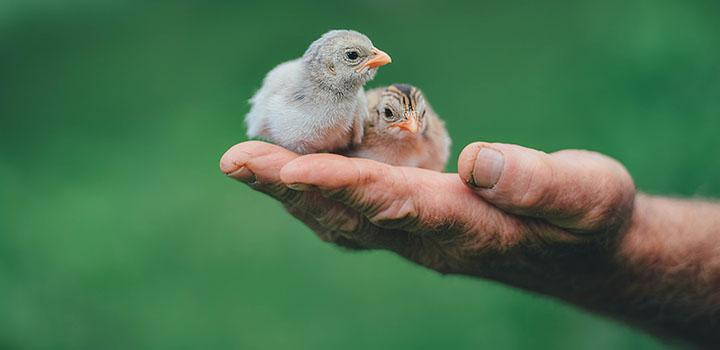Posted by Grange Co-op on 9th Jul 2020
One of the most popular ornamental chicken breeds, Silkie Bantam’s are a fun addition to any flock. Known for their friendly temperaments and unique appearance, Silkies are beloved among many backyard flocks and homesteaders alike. An egg-laying pullet, Silkies are a Bantam breed of chicken, making their eggs smaller than the average egg-layer. Despite their smaller egg size, the faithfulness and care they show to their offspring are abundant,… Read more
Posted by Grange Co-op on 31st Aug 2015
Baby Pheasants, Chukar, and Quail require a brooder temperature of approximately 95 degrees for the first week, dropping approximately 5 degrees every 3 days or so until the end of the brooding period. They will feather out quickly, so they do not require as much heat as chickens and turkeys. Watch them closely to see if they are comfortable: if they cluster under the lamp, they are too cold; if they stay far away, drop their wings and pant, t… Read more
Posted by Grange Co-op on 30th Aug 2015
Baby Guineas require a brooder temperature of approximately 95 degrees for the first week, dropping approximately 5 degrees every 3 days or so until the end of the brooding period. Watch them closely to see if they are comfortable: If they cluster under the lamp, they are too cold; if they stay far away, drop their wings and pant, they are too hot; and if they range all over the brooder, they are comfortable. Always make sure they have a place… Read more
Posted by Grange Co-op on 28th Aug 2015
Baby Turkeys (turkey poults) are fairly easy to raise, if you follow a few simple steps.
Turkey poults love heat. They will be happiest if you keep their brooder temperature at 95-100 degrees for the first week, then lower the temperature by about 5 degrees per week until they are fully feathered, approximately 6-8 weeks old. They will still appreciate a
heat lamp at night for a few weeks after this period if the nights are cool. You can… Read more




